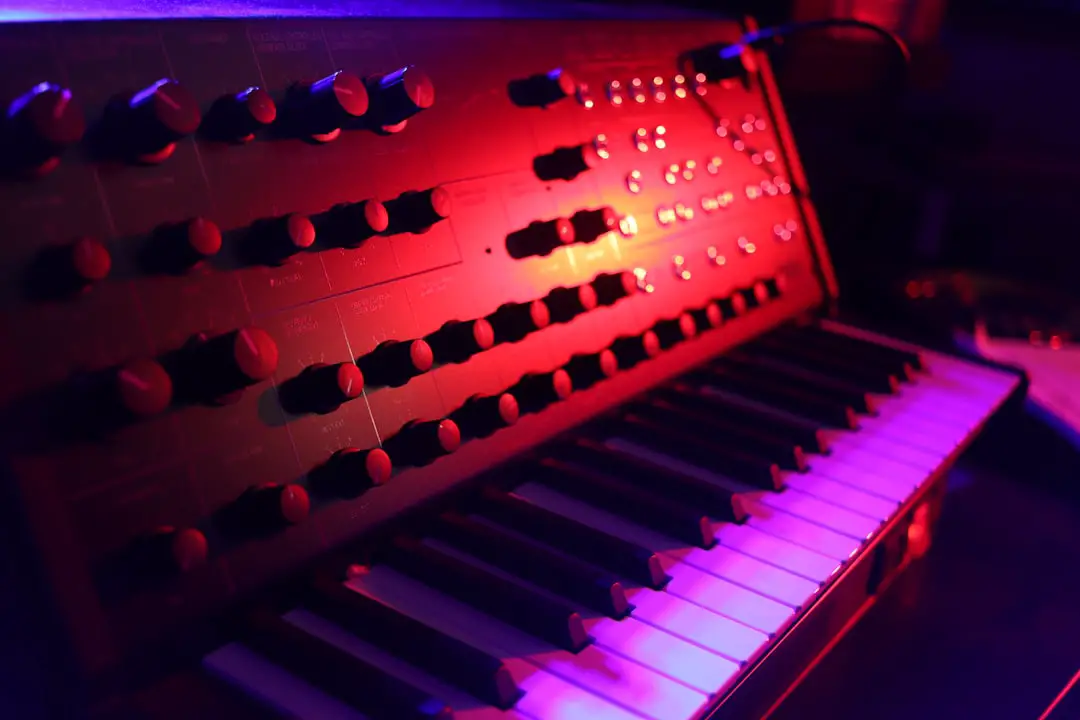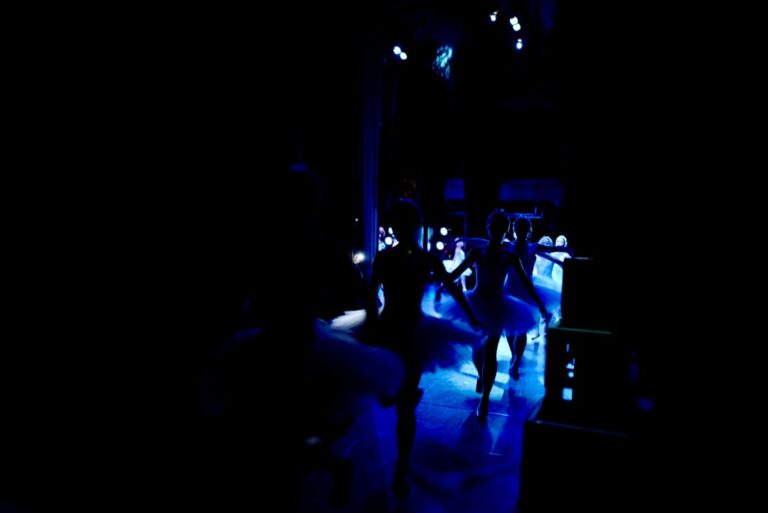Support our educational content for free when you purchase through links on our site. Learn more
Discover the 15 Essential Synth Pop Artists You Need to Know 🎶
Welcome to the vibrant world of Synth Pop! If you’ve ever found yourself dancing to the infectious beats of Depeche Mode or humming along to the catchy hooks of The Human League, you’re already a fan of this genre. Synth Pop, with its roots in the late 1970s and early 1980s, has not only shaped the sound of pop music but has also influenced countless artists across various genres. In this article, we’ll take you on a journey through the 15 essential Synth Pop artists you absolutely need to know, along with insights into their impact and legacy.
Did you know that Synth Pop was a major force behind the rise of electronic dance music? With its catchy melodies and innovative use of synthesizers, this genre has left an indelible mark on the music scene. So, whether you’re a long-time fan or just starting to explore, get ready to discover the sounds that defined a generation and continue to inspire today’s music!
Key Takeaways
- Synth Pop originated in the late 1970s and became a dominant genre in the 1980s.
- Key characteristics include catchy melodies, heavy use of synthesizers, and electronic beats.
- Notable artists like Depeche Mode, The Human League, and Duran Duran shaped the genre’s sound.
- Cultural impact: Synth Pop influenced various movements, including New Wave and Electronic Dance Music.
- Modern artists like Chvrches and M83 are reinventing the genre for a new generation.
Ready to dive deeper into the world of Synth Pop? 👉 Shop essential Synth Pop albums and gear to enhance your listening experience! Check out these links for more:
- 👉 Shop Depeche Mode on: Amazon | Official Site
- 👉 Shop The Human League on: Amazon | Official Site
Table of Contents
- Quick Tips and Facts
- The Evolution of Synth Pop: A Musical Journey
- Key Characteristics of Synth Pop Music
- The Synth Pop Sound: Instruments and Techniques
- Notable Synth Pop Artists and Bands You Should Know
- The Cultural Impact of Synth Pop: Trends and Movements
- Criticism and Controversies Surrounding Synth Pop
- The Legacy of Synth Pop: How It Shaped Modern Music
- Synth Pop in the Digital Age: New Directions and Innovations
- Synth Pop Festivals and Events: Where to Experience the Vibe
- Quick Tips for Exploring Synth Pop Music
- Conclusion
- Recommended Links
- FAQ
- Reference Links
Quick Tips and Facts
If you’re looking to dive into Synth Pop Music 🎵, you might want to start with some iconic songs like those from Iconic Synth Pop Songs. Check out our related article about Nitro Fun – Final Boss: 7 Epic Insights You Didn’t Know! 🤖 for more insights. Here are some quick tips and facts about Synth Pop:
- Synth Pop is also known as techno-pop 🤖
- It originated in the late 1970s and early 1980s in Europe and Japan 🌎
- The genre is characterized by its use of synthesizers, drum machines, and sequencers 🎸
- Synth Pop was a major influence on the development of house music, techno, and electronic dance music 💃
The Evolution of Synth Pop: A Musical Journey
Synth Pop has undergone significant changes since its inception in the late 1970s. The genre has evolved from its early experimental days to become a mainstream phenomenon. Here’s a brief overview of the evolution of Synth Pop:
Early Days (1977-1980)
Synth Pop emerged in the late 1970s, with artists like Kraftwerk, Tangerine Dream, and Gary Numan pioneering the genre. These early days were marked by experimentation with new sounds and technologies.
Commercial Success (1981-1985)
The early 1980s saw Synth Pop gain commercial success, with artists like Depeche Mode, The Human League, and Duran Duran achieving mainstream popularity. This period was characterized by the use of synthesizers, drum machines, and sequencers to create a distinctive sound.
Decline and Revival (1986-2000)
Synth Pop’s popularity declined in the late 1980s, but the genre experienced a revival in the 1990s and 2000s, with the emergence of indietronica and electroclash. This period saw a new generation of artists experimenting with Synth Pop sounds.
Key Characteristics of Synth Pop Music
Synth Pop music is characterized by its use of synthesizers, drum machines, and sequencers. Here are some key characteristics of Synth Pop music:
- Heavy use of synthesizers: Synth Pop music often features prominent use of synthesizers, which are used to create a wide range of sounds and textures.
- Catchy melodies: Synth Pop songs often feature catchy, memorable melodies that stick in your head.
- Simple harmonies: Synth Pop music often features simple harmonies and chord progressions, which are used to create a sense of tension and release.
- Prominent use of drum machines: Synth Pop music often features prominent use of drum machines, which are used to create a driving beat and rhythm.
The Synth Pop Sound: Instruments and Techniques
The Synth Pop sound is characterized by the use of synthesizers, drum machines, and sequencers. Here are some common instruments and techniques used in Synth Pop music:
- Synthesizers: Synthesizers are electronic instruments that generate sound through a variety of techniques, including subtractive synthesis, FM synthesis, and wavetable synthesis.
- Drum machines: Drum machines are electronic instruments that are used to create drum patterns and rhythms.
- Sequencers: Sequencers are used to control and arrange the different elements of a Synth Pop song, including the synthesizers, drum machines, and effects processors.
Notable Synth Pop Artists and Bands You Should Know
Here are some notable Synth Pop artists and bands you should know:
- Depeche Mode: Depeche Mode is a British Synth Pop band that has been active since the 1980s. They are known for their dark, introspective sound and hits like “Personal Jesus” and “Enjoy the Silence”.
- The Human League: The Human League is a British Synth Pop band that was formed in the late 1970s. They are known for their catchy, upbeat sound and hits like “Don’t You Want Me” and “Human”.
- Duran Duran: Duran Duran is a British Synth Pop band that was formed in the late 1970s. They are known for their stylish, fashionable sound and hits like “Hungry Like the Wolf” and “Rio”.
- Gary Numan: Gary Numan is a British Synth Pop artist who was active in the late 1970s and early 1980s. He is known for his dark, introspective sound and hits like “Cars” and “Are Friends Electric?”.
- Kraftwerk: Kraftwerk is a German Synth Pop band that was formed in the late 1960s. They are known for their experimental, avant-garde sound and hits like “The Robots” and “Autobahn”.
The Cultural Impact of Synth Pop: Trends and Movements
Synth Pop has had a significant cultural impact, influencing a wide range of trends and movements. Here are some examples:
- New Wave: Synth Pop was a key influence on the New Wave movement, which emerged in the late 1970s and early 1980s. New Wave was characterized by its use of synthesizers, drum machines, and sequencers, as well as its emphasis on style and fashion.
- Gothic Rock: Synth Pop was also an influence on the Gothic Rock movement, which emerged in the late 1970s and early 1980s. Gothic Rock was characterized by its use of dark, introspective sounds and lyrics, as well as its emphasis on style and fashion.
- Electronic Dance Music: Synth Pop was a key influence on the development of Electronic Dance Music (EDM), which emerged in the 1980s and 1990s. EDM is characterized by its use of synthesizers, drum machines, and sequencers, as well as its emphasis on danceability and energy.
Criticism and Controversies Surrounding Synth Pop
Synth Pop has been the subject of criticism and controversy over the years. Here are some examples:
- Lack of musicianship: Some critics have argued that Synth Pop lacks musicianship, with its reliance on synthesizers, drum machines, and sequencers.
- Overemphasis on style: Some critics have argued that Synth Pop places too much emphasis on style and fashion, rather than substance and musicality.
- Commercialism: Some critics have argued that Synth Pop is too commercial, with its emphasis on catchy melodies and simple harmonies.
The Legacy of Synth Pop: How It Shaped Modern Music
Synth Pop has had a lasting legacy, shaping the course of modern music. Here are some examples:
- Influence on Electronic Music: Synth Pop was a key influence on the development of Electronic Music, which emerged in the 1980s and 1990s.
- Influence on Indie Rock: Synth Pop was also an influence on the Indie Rock movement, which emerged in the 1980s and 1990s.
- Influence on Pop Music: Synth Pop has had a lasting influence on Pop Music, with its emphasis on catchy melodies, simple harmonies, and style.
Synth Pop in the Digital Age: New Directions and Innovations
Synth Pop has continued to evolve in the digital age, with new directions and innovations emerging. Here are some examples:
- Software Synthesizers: The development of software synthesizers has made it possible for artists to create high-quality Synth Pop sounds using a computer.
- Virtual Instruments: The development of virtual instruments has made it possible for artists to create a wide range of sounds and textures using a computer.
- Online Communities: The rise of online communities has made it possible for Synth Pop artists to connect with each other and share their music with a wider audience.
Synth Pop Festivals and Events: Where to Experience the Vibe
If you’re looking to experience the Synth Pop vibe, here are some festivals and events you should check out:
- Synth Pop festivals: There are a number of Synth Pop festivals around the world, including the Synth Pop Festival in Germany and the Electronic Music Festival in the UK.
- Concerts and gigs: Many Synth Pop artists and bands perform live concerts and gigs, which are a great way to experience the music and energy of the genre.
- Online events: There are also a number of online events and festivals that celebrate Synth Pop music, including online concerts and livestreams.
Quick Tips for Exploring Synth Pop Music
If you’re new to Synth Pop music, here are some quick tips for exploring the genre:
- Start with the classics: Start by listening to some of the classic Synth Pop artists and bands, such as Depeche Mode, The Human League, and Duran Duran.
- Explore different subgenres: Synth Pop is a diverse genre, with a number of different subgenres and styles. Explore different subgenres, such as Darkwave and Electroclash, to find the sounds and styles that you enjoy.
- Check out online communities: There are a number of online communities and forums dedicated to Synth Pop music, where you can connect with other fans and discover new artists and bands.
Conclusion

In summary, Synth Pop is a genre that has not only shaped the landscape of pop music but also influenced countless artists and genres that followed. With its catchy melodies, innovative use of synthesizers, and cultural significance, Synth Pop remains a vibrant and evolving genre.
Positives:
- Catchy and Memorable Melodies: Synth Pop is known for its infectious hooks that make songs instantly recognizable.
- Innovative Sound: The genre has pushed the boundaries of music technology, introducing new sounds and production techniques.
- Cultural Influence: Synth Pop has played a significant role in shaping various music movements and continues to inspire new artists.
Negatives:
- Criticism of Musicianship: Some critics argue that the reliance on technology can lead to a perceived lack of musicianship.
- Commercialization: The genre has faced backlash for being overly commercial and style-focused.
Overall, we confidently recommend diving into the world of Synth Pop! Whether you’re revisiting classic tracks or exploring modern interpretations, there’s a wealth of music to discover. 🎶
Recommended Links
- 👉 Shop Depeche Mode on: Amazon | Official Site
- 👉 Shop The Human League on: Amazon | Official Site
- 👉 Shop Duran Duran on: Amazon | Official Site
- Books on Synth Pop:
FAQ

What are the key characteristics of Synth Pop music?
Synth Pop music is defined by:
- Heavy use of synthesizers: Synthesizers are the backbone of the genre, providing a wide range of sounds.
- Catchy melodies: Songs often feature memorable hooks that make them radio-friendly.
- Electronic beats: Drum machines and sequencers create a rhythmic foundation that is both danceable and engaging.
- Lyrical themes: Common themes include love, technology, and urban life, often with a futuristic twist.
Read more about “Experience the Thrill of Nitro Fun: 10 Must-Know Tips for 1 Hour of Gameplay! 🎮 …”
How did Synth Pop evolve from the 1980s to the present day?
The evolution of Synth Pop can be summarized as follows:
- 1980s: Synth Pop reached its peak with bands like Depeche Mode and The Human League dominating the charts.
- 1990s: The genre faced a decline as grunge and alternative rock took over, but artists like Pet Shop Boys continued to thrive.
- 2000s: A revival occurred with the emergence of indietronica and electroclash, introducing new artists and sounds.
- Present Day: Modern artists like Chvrches and M83 are reinventing the genre, blending it with contemporary styles and technology.
Read more about “What is Synth-Pop Best Described As? 10 Key Insights 🎹 …”
What are some of the most influential Synth Pop bands of all time?
Influential Synth Pop bands include:
- Kraftwerk: Pioneers of electronic music who laid the groundwork for Synth Pop.
- Depeche Mode: Known for their darker sound and introspective lyrics.
- The Human League: Famous for their catchy hits and innovative production techniques.
- Duran Duran: Blended Synth Pop with rock elements, achieving massive commercial success.
Read more about “Discover the Evolution of New Order: 12 Essential Insights … 🎶”
What equipment and software is typically used to create Synth Pop music?
Commonly used equipment includes:
- Synthesizers: Instruments like the Moog and Roland Juno are staples in Synth Pop production.
- Drum Machines: Devices like the Roland TR-808 and TR-909 provide iconic beats.
- Software: Digital Audio Workstations (DAWs) like Ableton Live and FL Studio are popular for arranging and producing Synth Pop tracks.
Read more about “15 Modern Synth Pop Artists You Need to Know in 2025 🎶”
How does Synth Pop differ from other electronic music genres like Techno and House?
Key differences include:
- Melodic Focus: Synth Pop emphasizes catchy melodies and song structure, while Techno and House focus more on rhythm and groove.
- Vocal Presence: Synth Pop often features prominent vocals, whereas Techno and House may prioritize instrumental tracks.
- Lyrical Content: Synth Pop typically explores themes of love and emotion, while Techno and House often focus on the dance experience.
What role did Synth Pop play in the development of modern electronic dance music?
Synth Pop was foundational in:
- Introducing electronic instruments: Synthesizers and drum machines became standard in dance music.
- Influencing genres: Elements of Synth Pop can be found in House, Techno, and EDM, shaping their sound and structure.
- Creating a dance culture: The catchy, upbeat nature of Synth Pop contributed to the rise of dance clubs and electronic music festivals.
Can Synth Pop be considered a nostalgic genre, and how does it influence contemporary music?
Yes, Synth Pop is often viewed as nostalgic:
- 1980s Revival: Many contemporary artists draw inspiration from the sounds and aesthetics of the 1980s.
- Cultural References: Modern media often references Synth Pop, creating a sense of nostalgia for past eras.
- Influence on New Artists: Artists like Dua Lipa and The Weeknd incorporate Synth Pop elements into their music, bridging the gap between past and present.
Are there any modern artists who are helping to revive and reinvent the Synth Pop sound?
Yes, several modern artists are making waves:
- Chvrches: Known for their catchy melodies and modern production techniques.
- M83: Blends Synth Pop with shoegaze and ambient influences.
- Grimes: Fuses Synth Pop with experimental sounds, pushing the genre’s boundaries.





